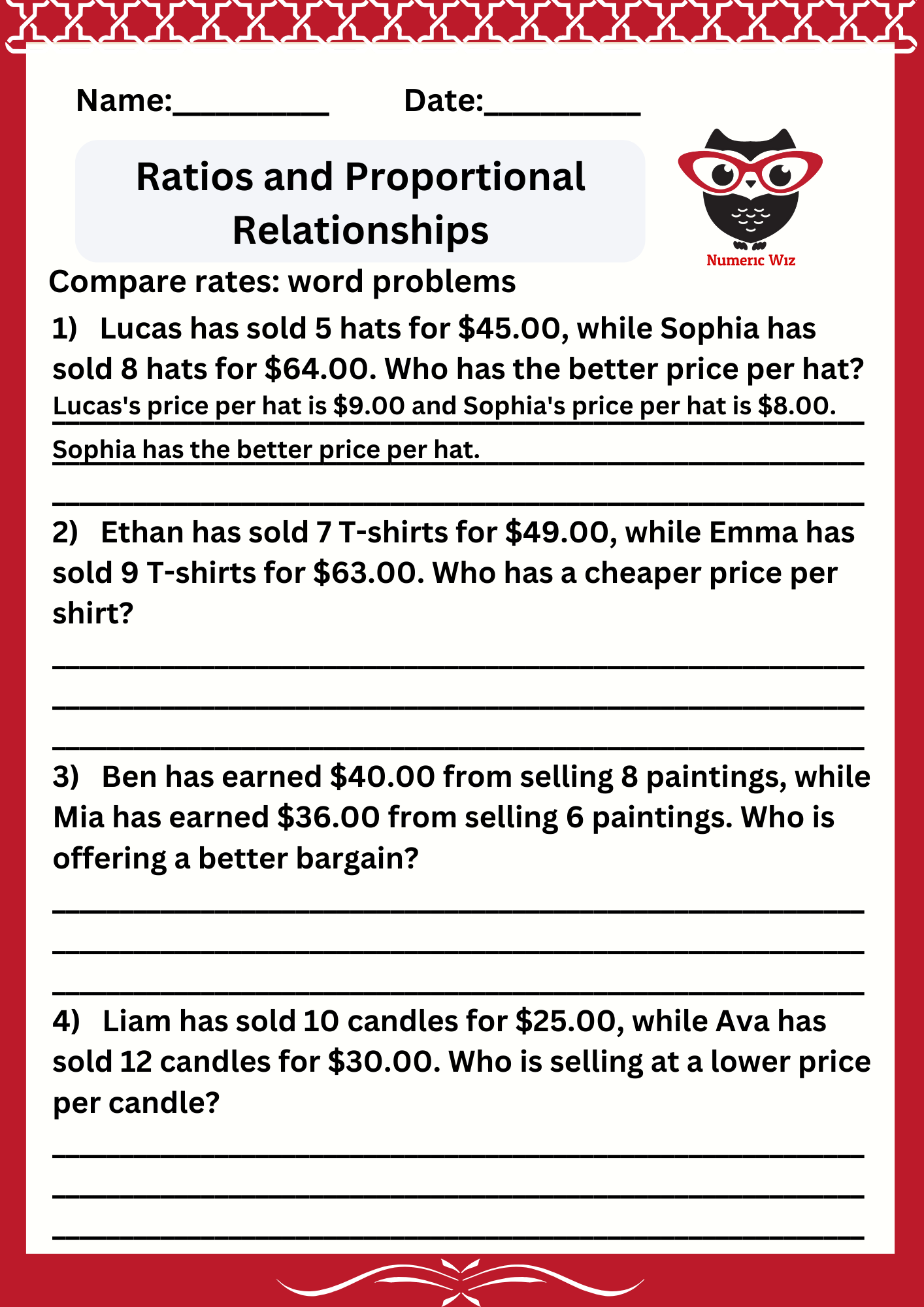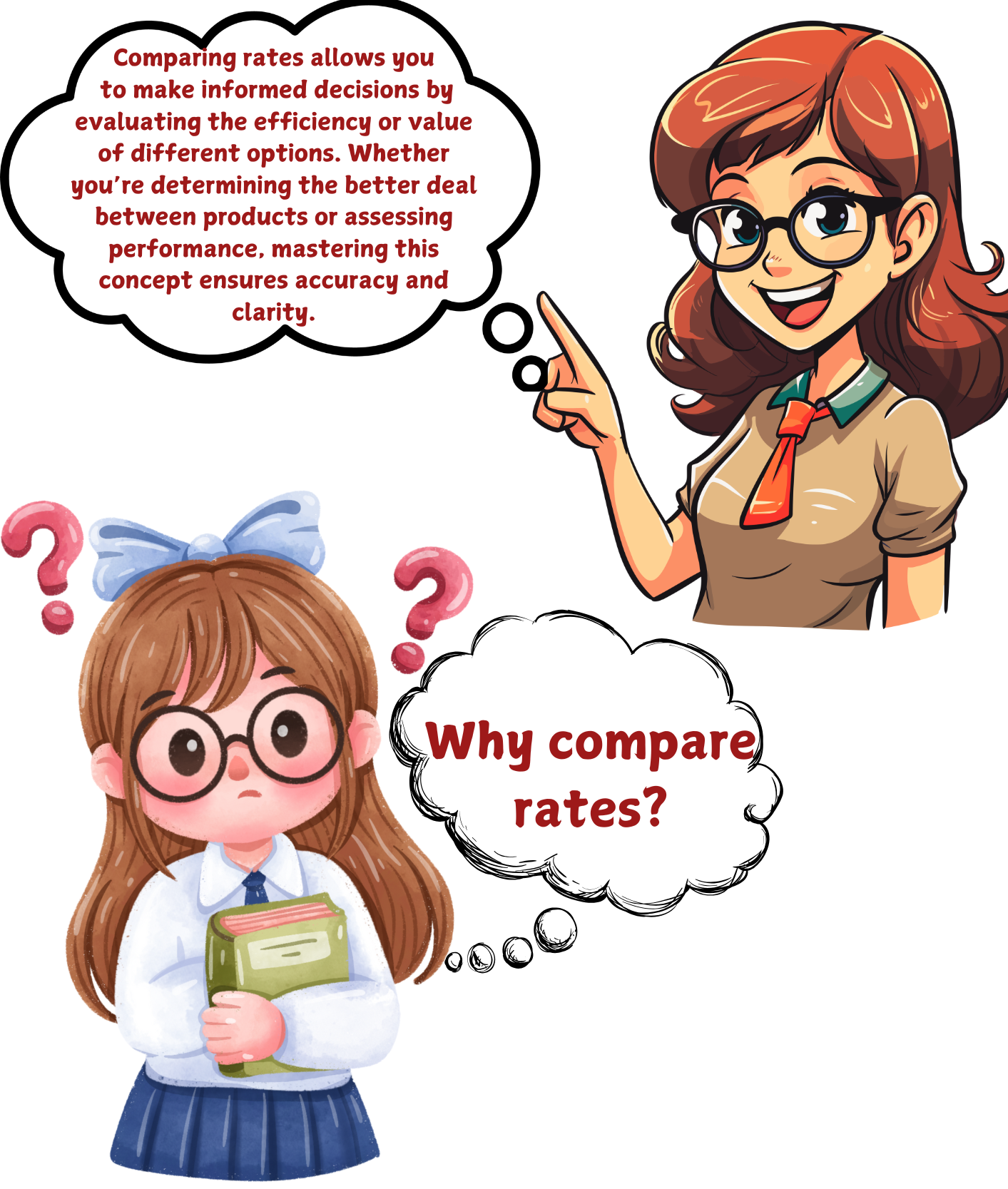
Learn how to compare rates effectively by creating tables of equivalent ratios with whole-number measurements. This skill is essential for identifying relationships between quantities and understanding proportionality in real-world scenarios. By finding missing values and analyzing patterns, you can confidently compare rates in diverse applications like pricing, speed, or productivity.

Problem: A car travels 120 miles in 3 hours, while a truck travels 200 miles in 5 hours. Which vehicle is faster?
Find the rate for the car:
120/3=40 miles per hour.
Find the rate for the truck:
200/5=40 miles per hour.
Conclusion: Both vehicles travel at the same speed of 40 miles per hour.
Problem: A 10-pound bag of rice costs $30, and a 15-pound bag costs $45. Which is the better deal?
Calculate the unit price for the 10-pound bag:
30/10=3 dollars per pound.
Calculate the unit price for the 15-pound bag:=3 dollars per pound.
Conclusion: Both options have the same unit price of $3 per pound, so neither is a better deal.
Problem: Worker A packs 120 boxes in 4 hours, and Worker B packs 150 boxes in 5 hours. Who is more productive?
Calculate the rate for Worker A:
120/4=30 boxes per hour.
Calculate the rate for Worker B:
150/5=30 boxes per hour.
Conclusion: Both workers have the same productivity rate of 30 boxes per hour.
Shopping: Compare unit prices to find the best value for money.
Travel: Analyze speeds to choose the quickest route.
Work Efficiency: Measure productivity rates to improve performance.
By creating tables, solving for missing values, and analyzing equivalent ratios, you’ll gain the skills needed to confidently compare rates in any situation. Unlock the power of proportional reasoning to make smarter decisions every day!
Let’s explore how comparing rates can help you solve everyday problems and make smarter decisions!
For a limited time
